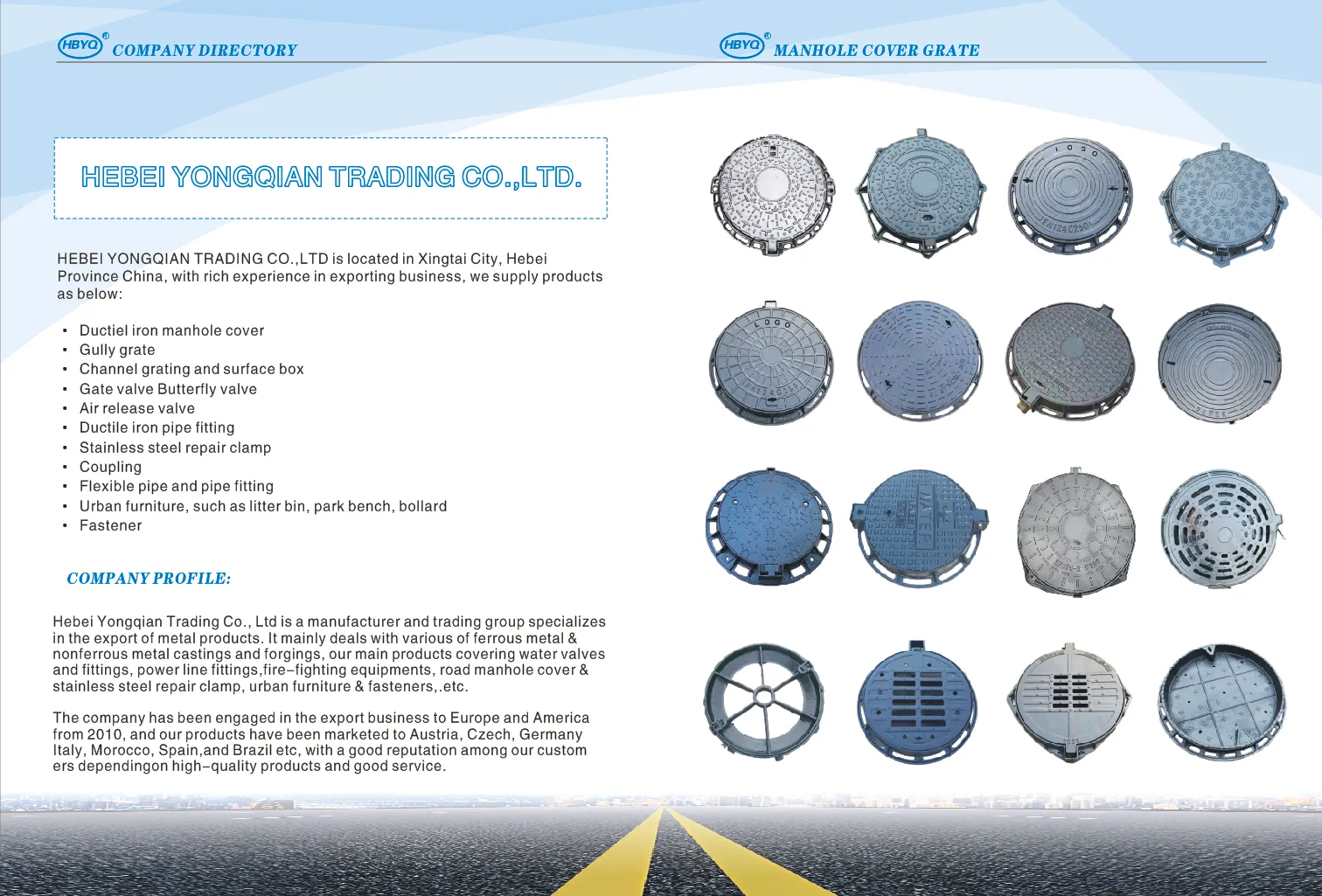Transforming Round Manholes into Square Designs for Enhanced Urban Planning Solutions
Round to Square Manhole Conversions A Practical Approach to Urban Infrastructure
In urban planning and infrastructure development, the design and implementation of manholes are crucial for ensuring efficient water drainage, sewer systems, and accessibility to underground utilities. A common challenge that engineers and city planners face is the transition from round to square manholes. This topic, while seemingly niche, plays a significant role in the design integrity, safety, and functionality of urban environments.
The Function of Manholes
Manholes serve as access points to underground utilities and systems. Typically found in streets and sidewalks, they provide entry for maintenance personnel to inspect, clean, and repair various infrastructures, such as sewer lines, electrical conduits, and water pipes. The design and shape of these manholes impact not only the ease of access but also the structural stability and safety of the surrounding area.
Why Round?
Traditionally, round manholes have been the preferred choice for many engineers. The circular shape has several advantages 1. Uniform Stress Distribution Round shapes distribute stress evenly around their circumference, reducing the likelihood of structural failure. This is particularly important in areas with heavy traffic where load-bearing strength is critical. 2. Ease of Manufacturing Circular manholes can be easily produced and installed, making them a cost-effective option. 3. Safety and Prevention of Falls A round cover cannot fall through its circular opening, which minimizes the risk of accidents.
round to square manhole

The Shift to Square Manholes
Although round manholes have dominated urban infrastructure for years, there are situations where square or rectangular manholes may be favored. This shift arises from various aesthetic, spatial, and functional considerations 1. Space Constraints Urban environments are often crowded, leaving limited space for traditional circular manholes. Square manholes can fit more snugly in confined areas, making them ideal for densely populated cities. 2. Integration with Paving Square manholes can align more easily with square paving stones or road designs, creating a visually appealing and cohesive look in urban landscapes. 3. Enhanced Access Square covers can provide a larger opening for easier access, accommodating larger tools and equipment for maintenance workers.
The Round to Square Transition
When transitioning from round to square manholes, several factors need to be considered to ensure the integrity and functionality of the system 1. Structural Analysis Engineers must conduct a thorough structural analysis to ensure that square manholes can withstand similar loads as their round counterparts. This often involves utilizing advanced materials and design techniques. 2. Hydraulic Considerations The transition must maintain effective flow in connected systems. Hydraulic studies are necessary to evaluate if a square manhole can offer comparable drainage efficiency. 3. Safety Protocols Compliance with safety regulations and standards is paramount. The design must ensure that the square manhole covers can bear the weight of vehicles without risk of breaking or collapsing.
Conclusion
The round to square manhole transition highlights the adaptability of urban planning to meet contemporary demands. As cities evolve and expand, so too must our infrastructure designs. Understanding the intricacies of different manhole shapes enhances our ability to create safe, functional, and aesthetically pleasing urban environments. Engineers and planners must collaborate to ensure that these transitions are executed efficiently, balancing form, function, and safety. The choice between round and square manholes reflects the broader challenges and innovations in urban infrastructure, emphasizing the importance of flexibility in design to accommodate the ever-changing landscape of our cities.
-
The Smarter Choice for Pedestrian AreasNewsJun.30,2025
-
The Gold Standard in Round Drain CoversNewsJun.30,2025
-
The Gold Standard in Manhole Cover SystemsNewsJun.30,2025
-
Superior Drainage Solutions with Premium Gully GratesNewsJun.30,2025
-
Superior Drainage Solutions for Global InfrastructureNewsJun.30,2025
-
Square Manhole Solutions for Modern InfrastructureNewsJun.30,2025
-
Premium Manhole Covers for Modern InfrastructureNewsJun.30,2025
